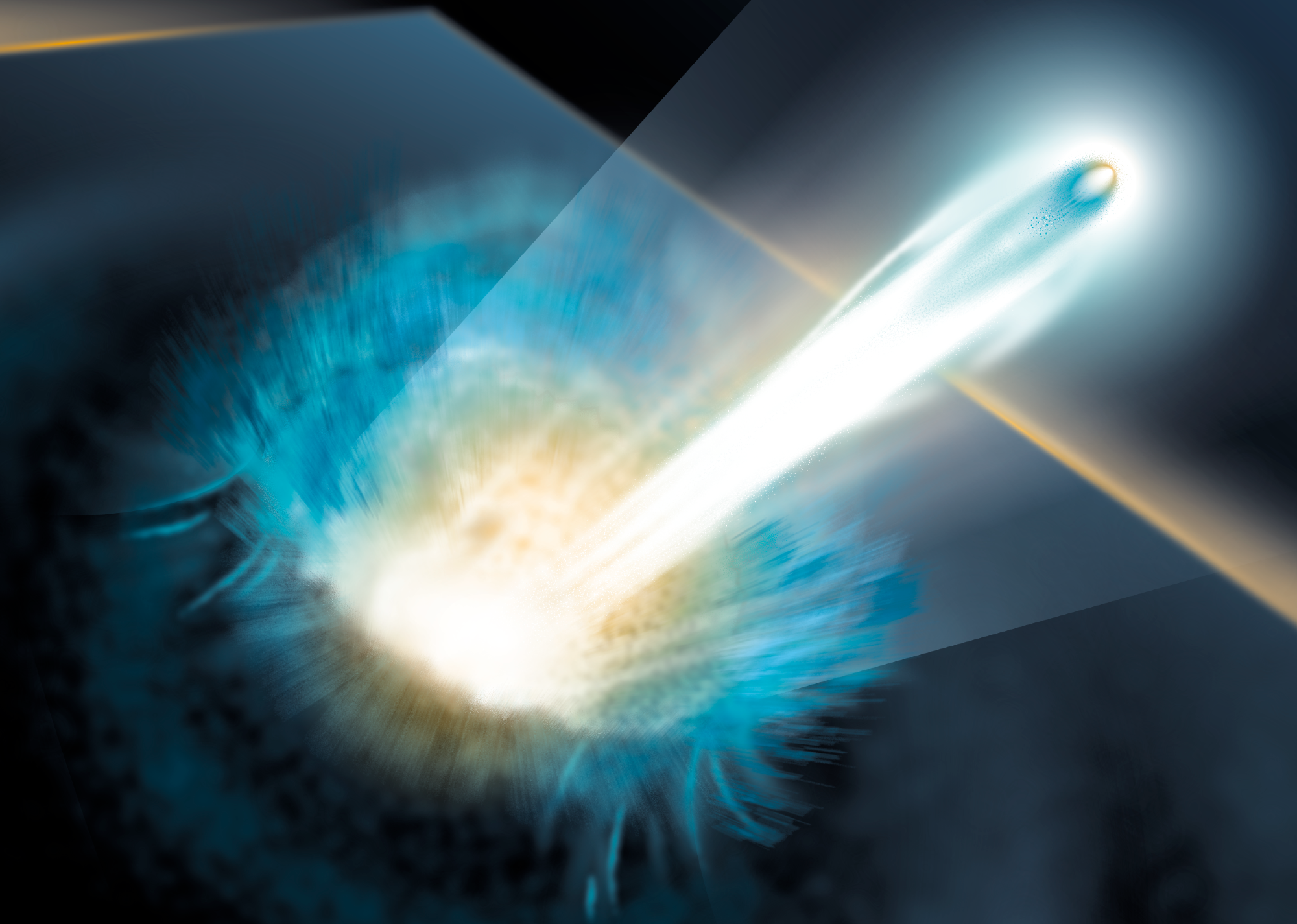In a recent publication in the journal Nature Physics, researchers at Helmholtz-Zentrum Dresden-Rossendorf (HZDR) have achieved a breakthrough in laser plasma acceleration. Utilizing a pioneering technique, they have significantly surpassed the previous record for proton acceleration. Remarkably, they have attained energies that were previously thought feasible only at much larger facilities, marking a significant milestone in the field.
 A research team at the HZDR has succeeded in significantly increasing the acceleration of protons via laser pulse by using an innovative method. Image Credit: Helmholtz-Zentrum Dresden-Rossendorf / Blaurock
A research team at the HZDR has succeeded in significantly increasing the acceleration of protons via laser pulse by using an innovative method. Image Credit: Helmholtz-Zentrum Dresden-Rossendorf / Blaurock
Compared to conventional accelerators, laser plasma acceleration promises more compact and energy-efficient facilities since the new technology employs lasers rather than strong radio waves to accelerate particles. This leads to some exciting new perspectives.
The idea is to fire incredibly brief, high-intensity laser pulses on wafer-thin foils. The light heats the material to the point where numerous electrons escape, leaving the atomic cores in place.
Due to the negative charge of electrons and the positive charge of atomic cores, a powerful electric field briefly arises between them. This field can propel a proton pulse across mere micrometers to energies that conventionally necessitate much longer distances using traditional accelerator technology.
However, this technology is still in its early stages of study. Only very big laser systems, of which there are very few in the world, have been used to produce proton energy of up to 100 MeV so far. Karl Zeil and Tim Ziegler, two HZDR Physicists, took a different route to get comparably high accelerator energy using shorter pulses and smaller laser facilities. They harness a property of laser flashes that is generally seen as a flaw.
A pulse’s energy does not kick in immediately, which would be the ideal case, instead, a little of the laser energy rushes ahead of it, like a kind of vanguard.
Tim Ziegler, Physicists, Helmholtz-Zentrum Dresden-Rossendorf
Suddenly Transparent
This forward-rushing light is a major element in the new idea. It can alter a carefully made piece of plastic foil in a vacuum chamber in the following ways: Ziegler explained, “The foil expands due to the influence of the light and gets ever hotter and thinner, and the foil effectively melts during the heating process.”
This has a favorable effect on the primary pulse, which happens right away. Rather than reflecting light primarily, the foil abruptly turns transparent, enabling the primary pulse to enter the material more deeply than it could have in earlier tests.
The result is that a complex cascade of acceleration mechanisms is triggered in the material, causing the protons contained in the film to be accelerated much more than they were by our DRACO laser.
Tim Ziegler, Physicists, Helmholtz-Zentrum Dresden-Rossendorf
The facility can now create almost twice as much proton energy (150 MeV) as it could earlier. To set this record, the group had to carry out several tests to get close to the ideal interaction parameters, such as the ideal film thickness.
When the research team analyzed the measurement data, they found another pleasing property of the accelerated particle beam. The high-energy protons exhibit a narrow energy distribution, which means that they are all roughly equally fast figuratively. This is a useful feature for later applications, for which high, uniform proton energies are very beneficial.
Energy Efficiency
One of these uses is researching novel radiobiological ideas for accurate, noninvasive tumor treatment. This technique applies extremely high radiation doses over relatively brief periods. Up until now, the major tool employed for these investigations has been large-scale conventional therapy accelerators, which are only accessible at a few centers in Germany and are naturally prioritized for patient treatment.
Thanks to the new HZDR approach, the adoption of tiny laser systems is now more likely. This approach also allows other research organizations to access these studies and provide radiation scenarios that are not possible with conventional systems.
Ziegler said, “Moreover, today’s facilities need a lot of power, based on laser plasma acceleration they could be much more economical.”
Neutrons might be produced efficiently using the same process. Laser flashes can generate short, powerful neutron pulses, which have applications in materials investigation, research, and technology.
Additionally, plasma accelerators can potentially greatly broaden the previously identified sectors of use. Primarily, though, the experts aim to improve and comprehend the new technique. They wish to collaborate with other labs to increase process control and accessibility, among other things. Additionally, more records are planned, and energies above 200 MeV seem quite feasible.
Journal Reference:
Ziegler, T., et al. (2024) Laser-driven high-energy proton beams from cascaded acceleration regimes. Nature Physics. doi.org/10.1038/s41567-024-02505-0.